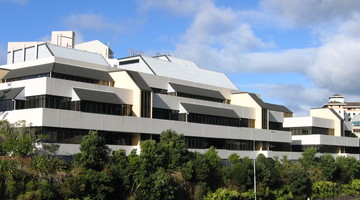Dr Stefano Pampanin from the University of Canterbury explains how the ‘smarter’ idea of ductile design originated at the University in the 1960s and is currently under further developments and refinements. Making buildings stronger is not the answer for earthquake protection.
Transcript
DR STEFANO PAMPANIN
In seismic design, designing a system to be stronger than the earthquake was typically the approach: “the stronger we make it, the safer we are.” That approach has been proved to be wrong by earthquake, which is the best test that you can have. And the 1995 earthquake, in Kobe in Japan, was actually the confirmation. Japanese approach: they were very strong in seismic engineering, but they were trying to design everything to be stronger and stronger and stronger. So if the earthquake comes to be stronger - and it is just a probabilistic issue: it will - you are going to fail in a brittle manner, like glass would.
So using what we call ductile design, this is a major breakthrough by two professors of University of Canterbury. The two P's: Park and Paulay. And they became the three P's with Professor Nigel Priestley. So Park, and Paulay, Preistley, made a revolutionary approach in seismic design, where, instead of having glass, why don't we have something which is more plasticizing, so its able to be made of glass in parts but the joint, the connection, should be a ductile, so it should be able to move and rotate like our body actually is. There are a lot of links in our body which are able to rotate, and so the whole concept of ductile design was to concentrate the weak link, the fuse of the building, in those position where we want. Such that you have the damage exactly where you want, and you avoid to have the full collapse of your building.
Acknowledgement:
National Information Service for Earthquake Engineering



